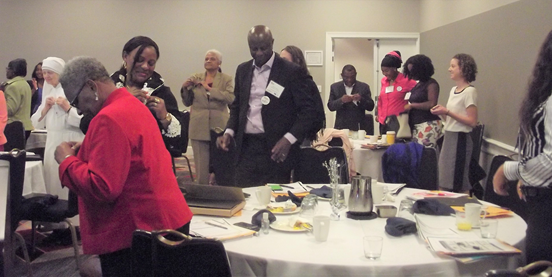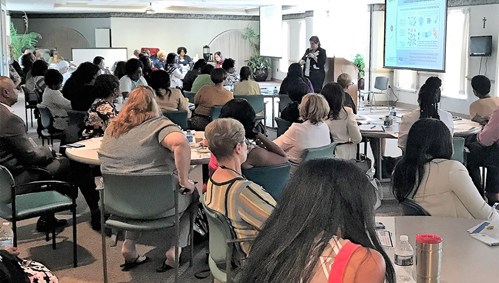
Over one million Americans reside in the nation’s 15,800 nursing homes on any given day. Those individuals and an even larger number of their family members, friends, and relatives, must be able to count on nursing homes to provide safe, reliable, high quality care.
The National Nursing Home Quality Care Collaborative focuses on overall quality in nursing homes and uses a data-driven, proactive approach to eliminating or reducing preventable healthcare acquired conditions (HACs) including falls, pressure ulcers, C.difficile infections, urinary tract infections, and inappropriate antipsychotic use in persons with dementia. The collaborative framework provides nursing homes the opportunity to engage in quality improvement work. Nursing home teams can participate no matter where they are on the quality continuum.
The District’s collaborative name and motto is “Mission Possible- Creating Agents for Change”. The AQIN-DC QIO engaged 83% of the state’s nursing home community with key stakeholders from the trade association and our Department of Health partners. We discussed the goals of the collaborative with key stakeholders to ensure alignment with their priorities and goals – an attempt to avoid duplication of effort. This important step provided one message going out to our providers. Teams could focus their energies and not have to answer or respond differently to each organization’s requests.

09/2016 Collaborative One- Outcomes Congress Swearing in of new Mission Possible Change Agents
Our collaborative work began April 2015 and will continue through September 2018. Our approach to engage the participants includes webinars and live LAN events that address:
- CMS’ collaborative change package, goal setting, Model for Improvement and PDSA.
- QAPI principles and implementation.
- Use of data to identify opportunities for improvement.
- Subject matter expert speakers to cover collaborative topics.
- Spotlighting teams and recognizing successes.
Teams receive monitoring and feedback through:
- Technical assistance calls/visits to review progress with selected goals.
- Each team’s senior leaders receives a quarterly facility progress report. Report identifies team’s progress on all collaborative measures, progress on composite score, and collaborative participation.
Results – Collaborative topics selected by most participants from Q4 2014 to Q2 2017
|
Quality Measure |
Q 4 2014 % rate |
Q 2 2017 % rate |
Relative Improvement Rate |
| Antipsychotic use | 13.7 | 10.3 | 24.8% |
| All falls | 31.1 | 30.4 | 2.2% |
| Physical Restraints | 0.3 | 0.1 | 66.6% |
| Urinary Tract Infection | 5.5 | 2.7 | 50.9% |
Lessons Learned by All

09/2017 Collaborative Two- Learning Session Two Learning about Antimicrobial Stewardship and Antibiotic Resistance
Teams have embraced the “all teach all learn” framework of a collaborative. Setting goals, monitoring the effects of interventions and sharing those successes has produced significant quality measure reductions in the state. The challenge will always be to rapidly spread the innovations and sustain the gains achieved.
How did we engage our collaborative community to achieve significant improvements? We learned:
- Including key stakeholders early during planning stages for recruiting, and trainings brings benefit with their specific knowledge, people connections and shared resources.
- Assisting providers in addressing immediate needs brings value to NH leadership and key staff.
- Smaller collaborative groups create a sense of community, enhances peer networking, and team sharing.
This material was prepared by the Atlantic Quality Innovation Network (AQIN), the Medicare Quality Innovation Network-Quality Improvement Organization for New York State, South Carolina, and the District of Columbia, under contract with the Centers for Medicare & Medicaid Services (CMS), an agency of the U.S. Department of Health and Human Services. The contents do not necessarily reflect CMS policy. 11SOW-AQINDC-TskC.2-17-23
